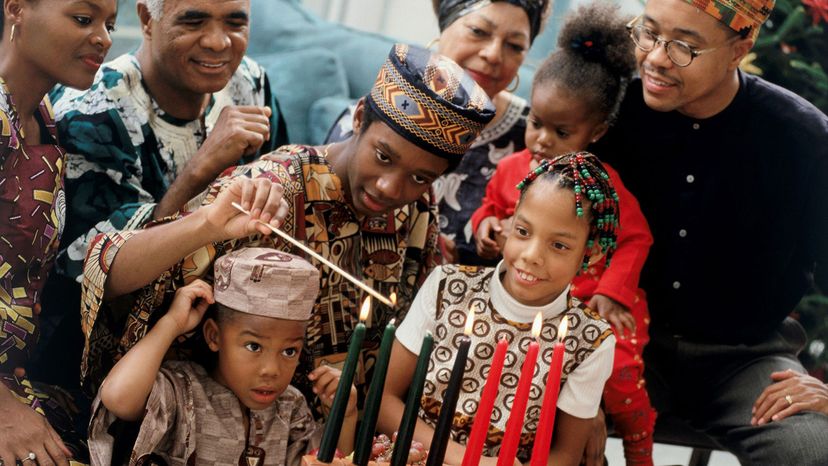The Seven Days of Kwanzaa

On the first day of Kwanzaa, December 26, the leader or minister calls everyone together and greets them with the official question: "Habari gani?" ("What's happening?"), to which they respond with the name of the first principle: "Umoja." The ritual is repeated on each day of the Kwanzaa celebration, but the answer changes to reflect the principle associated with the day. For example, on the second day, the answer is, "Kujichagulia."
Next, the family says a prayer. Then they recite a call for unity, Harambee ("Let's Pull Together"). The libation is then performed by one of the older adults, and one person (usually the youngest child) lights a candle on the Kinara. The group discusses the meaning of that day's principle, and the participants may tell a story or sing a song related to the principle. Gifts may be given one per day, or they may all be exchanged on the last day of Kwanzaa.
Advertisement
The Kwanzaa feast is held on the evening of December 31. The feast is not just about food -- it is also a time to sing, pray and celebrate African history and culture.
January 1, the final day of Kwanzaa, is a time for reflection, both individually and as a group. People ask themselves, "Who am I?" "Am I really who I say I am?" and "Am I all I ought to be?" The final candle in the Kinara is lit, and then all the candles are extinguished, signaling the end of the holiday.
In the following sections, we'll take a closer look at the elements of the Kwanzaa celebration.